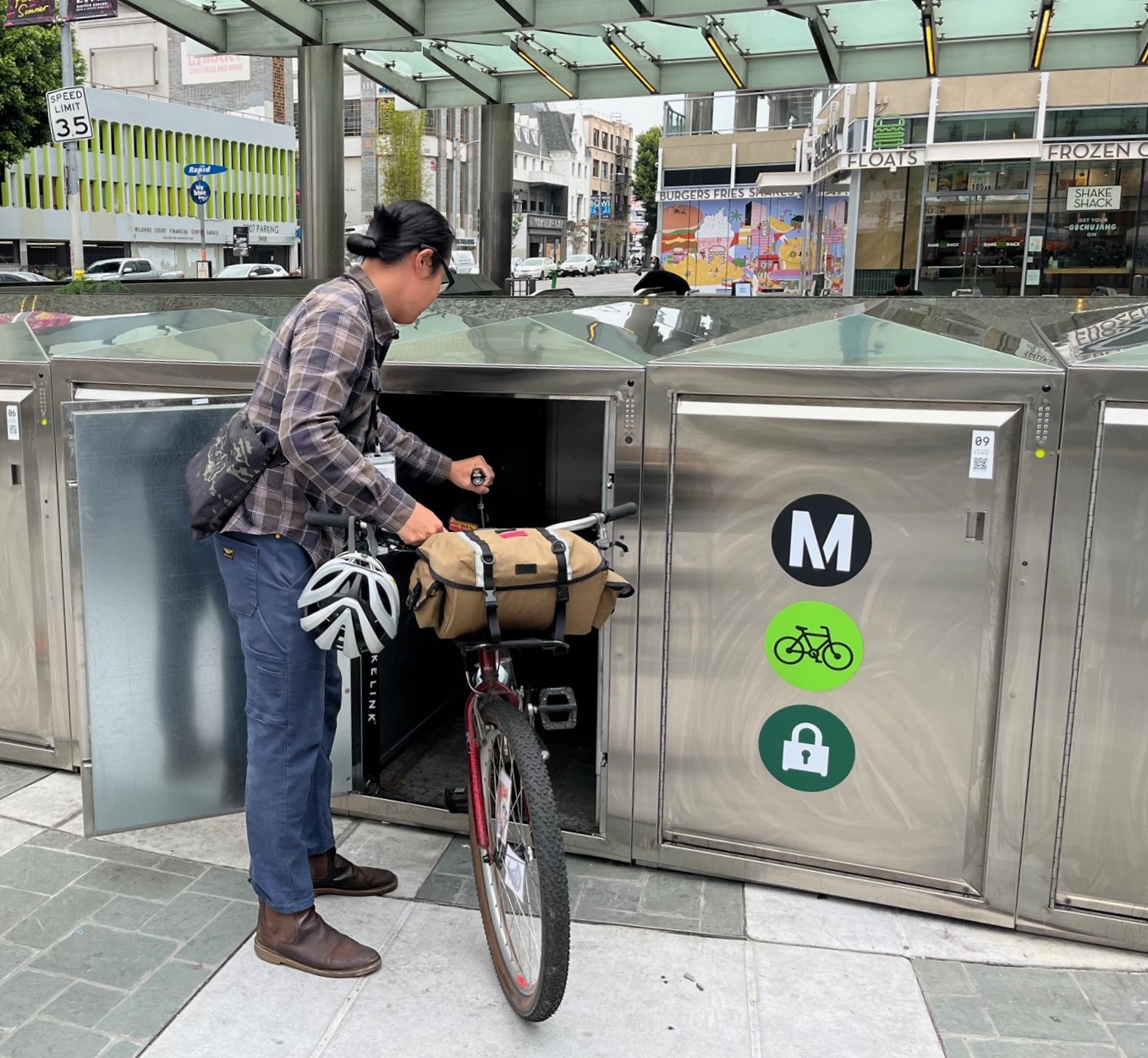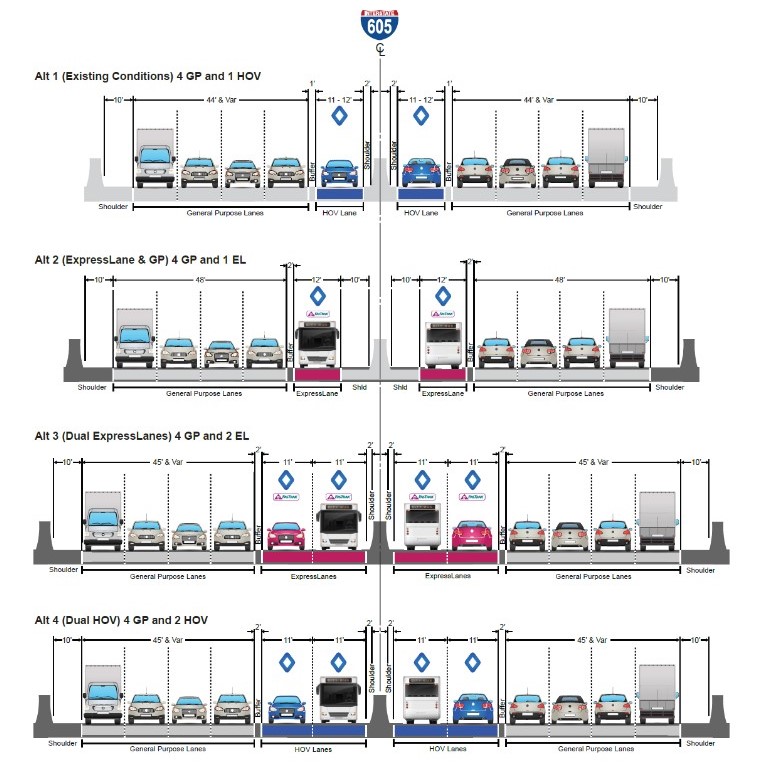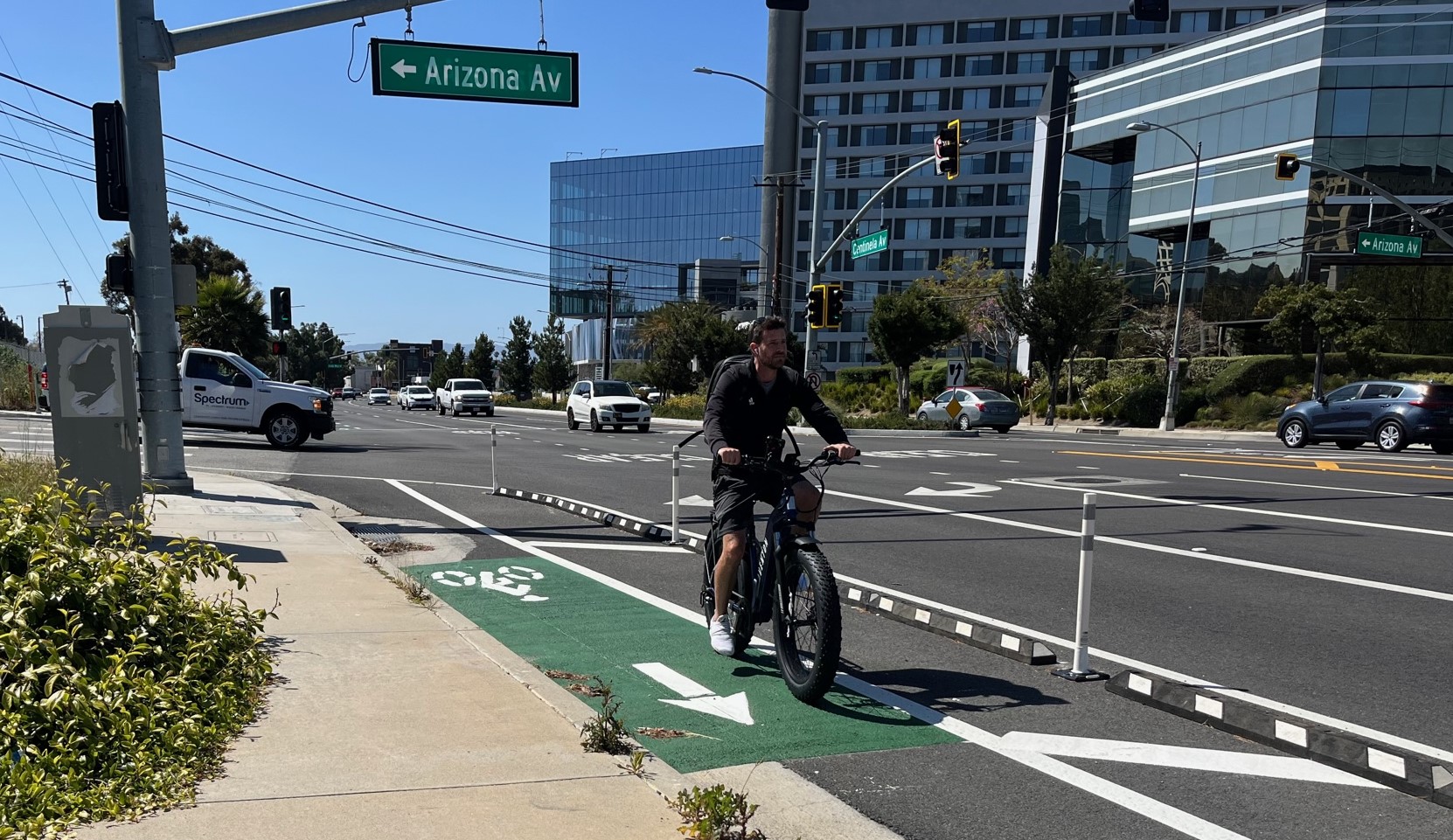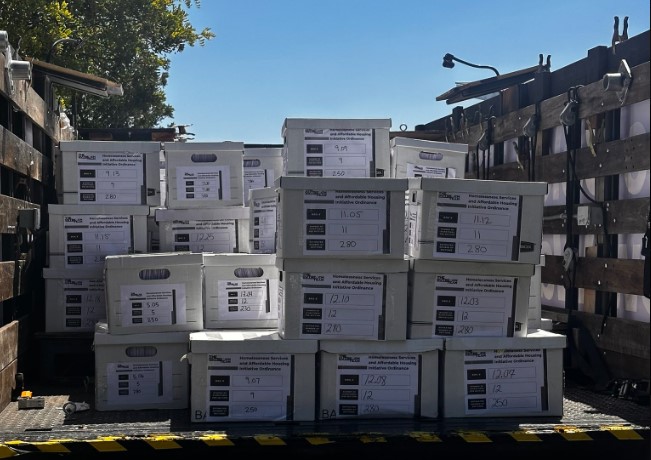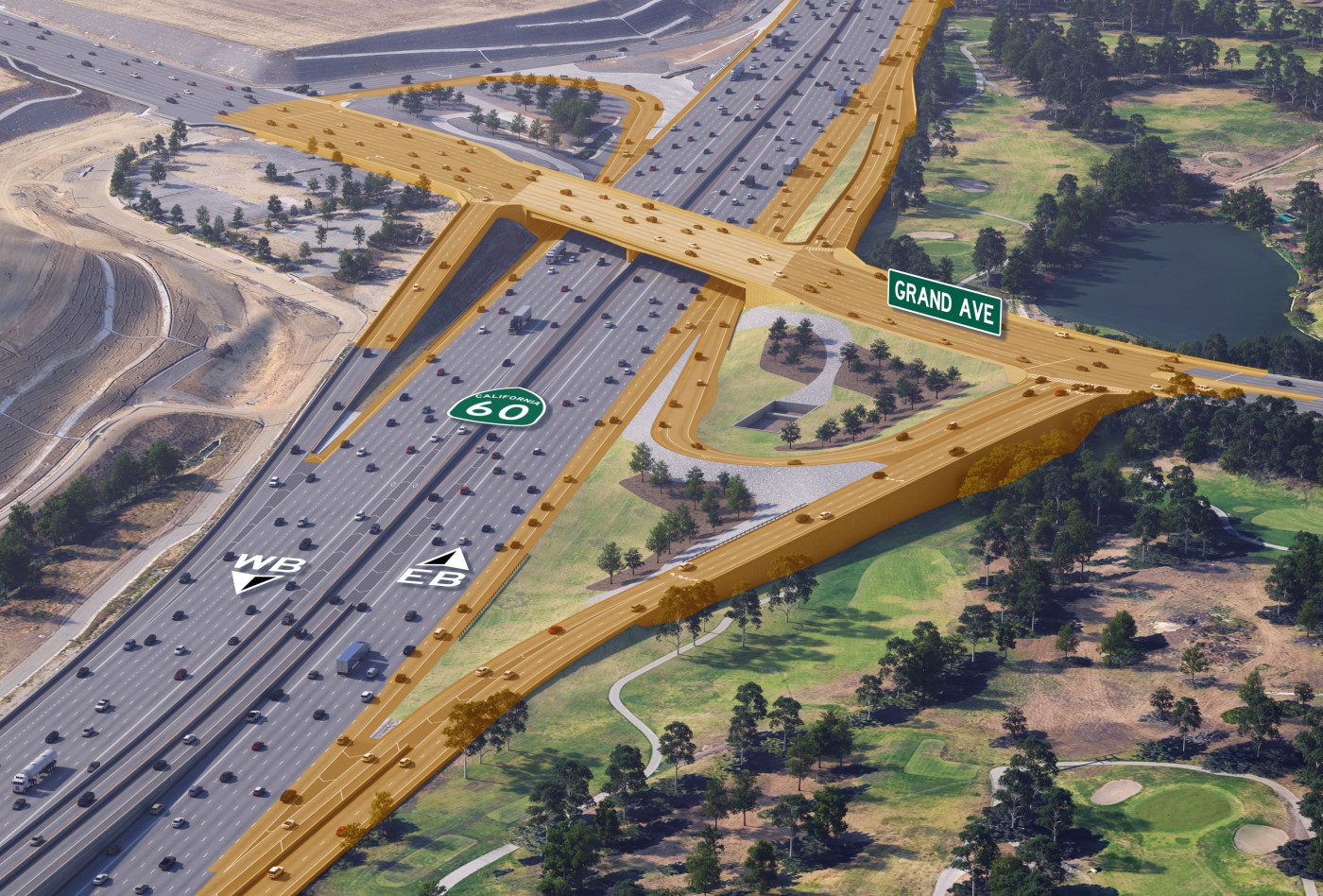One Angeleno’s Coronavirus Pandemic Diary: Day 23 – Safe Public Space In Los Angeles
5:40 PM PDT on April 2, 2020

Streets for All visualization of a quick-build safe street response to COVID-19
Day 20 of the COVID-19 pandemic. As of midday March 30, there are people infected/deaths: worldwide 774,081/37,093, U.S. 157,950/2,936, CA 6,358/132, L.A. County 2474/44
Day 21 of the COVID-19 pandemic. As of midday March 31, there are people infected/deaths: worldwide 854,958/41,506, U.S. 185,270/3,780, CA 7,593/158, L.A. County 3011/54
Day 22 of the COVID-19 pandemic. As of midday April 1, there are people infected/deaths: worldwide 932,013/46,667, U.S. 211,408/4,718, CA 8,704/184, L.A. County 3518/65
Day 23 of the COVID-19 pandemic. As of midday April 2, there are people infected/deaths: worldwide 1,015,746*/53,018, U.S. 240,511/5,810, CA 10,018/215, L.A. County 4045/78 (*worldwide total cases broke the one million mark today)
Today is the seventh entry in a series of occasional journal-type posts about what's happening regarding coronavirus in one SBLA editor's neck of the woods. Today's entry isn't all that personal. (I'll spare readers tales of the difficulties of getting a 6-year-old to stay away from others, to not touch just about everything in arm's reach, and to practice math, reading, Spanish, and piano. She'd be happy if we play pet shop all day.)
As I do for work most days, I've been thinking about urban space, walking, and bicycling... and how relevant/irrelevant these are in the face of a pandemic and mass economic downturn. People, including several of my neighbors - are having difficulty just paying rent. And we're lucky enough to have a roof over our heads - and here at L.A. Eco-Village - very affordable housing under essentially a non-profit landlord (for what it's worth, it's a limited-equity housing co-op on community land trust land - but that's another story.)
A couple months ago - when all there was was the earth overheating, and an epidemic of traffic deaths and injuries - getting public space to shift away from cars to people felt like a top priority. Today, nothing seems quite so sure.
At some point, things will return to more-or-less business-as-usual. In the meantime, as Naomi Klein urges, it is important to take advantage of a crisis to advance principles like health, equity, and care for the environment. Corporations are taking advantage of this crisis - many of them very polluting industries, including air travel and cruise ships. Ideally, humanity's collective response could entail a shift toward affirming life - practically this would be investing in programs like a green new deal.
In the shorter term, there are many cities doing rapid on-the-ground improvements. Bogota created temporary bike lanes. New York City is doing several car-free streets and temporary protected bike lanes. There are more examples, see both National Association of Transportation Officials (NACTO) recommendations and Dr. Tabitha Combs' document tracking examples.
In Southern California, Streets for All is calling for quick-build improvements to give Angelenos open space and mobility:
- Pilot a temporary emergency safe streets network to slow down speeding cars and give residents a safe 6’ distanced option for active transportation
- Create an accelerated path for street closure requests to increase local access to open space, especially in neighborhoods with limited park access
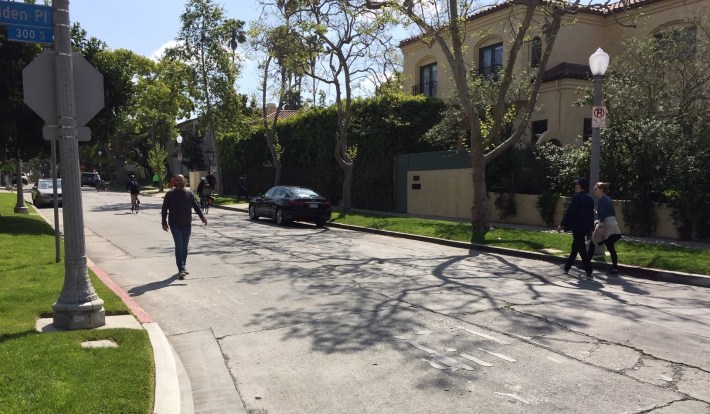
In the past, our family would take transit to get to bike paths where it's safe to bike together. (My six-year-old daughter misses the Burbank Chandler and says that we should just go there.) There are no bike paths in our neighborhood or any adjacent ones.
Lately, my family and I - alongside some of our neighbors - have been riding our bikes on Fourth Street. That relatively quiet street is technically a sharrow-ed bike route: fairly quiet (and quieter now than ever) but shared by drivers and cyclists. The city has had some plans for upgrading Fourth to be a bike boulevard. But thanks to some neighbor resistance - and a lack of leadership under Councilmembers David Ryu and, before him, Tom LaBonge - it remains car-centric. There are current city plans to do some mini-roundabouts, but those have languished for a year since a 2019 one-day pop-up.
Should streets like Fourth prioritize bicycling and walking? Of course. I would have liked to have seen many of these low-stress low-car-volume streets prioritize biking and walking a long time ago.
On the other hand... Looking at what's happening around the country, I have a worry about implementing car-free streets right now.
L.A. has done car-free streets - temporary ones: at recurring CicLAvia open streets festivals. Angelenos love them and flock to them in the tens of thousands. Part of me fears that a quick-build intitiave done right now would be half-hearted and insufficient. It could create a small handful of the needed spaces, but then Angelenos may flock there and spread the coronavirus.
During the peak of the COVID-19 pandemic (as in - the next two weeks - at least), Angelenos should be sticking close to home. Not walking, driving, or bicycling across town to get to a couple of temporary facilities. While it's good to get out of the house and walk and bike now and then - for health and sanity - these can't be in popular places that bring people together. These activities need to be as local as possible.
And in the longer run, we do need every neighborhood to have a few of these quiet streets prioritizing bicycling and walking.
What do you think?
Today's recommended reading:
- A tragic story of one L.A. street vendor who can't afford to stay at home - Sahra Sulaiman at SBLA
- Making lemonade out of lemons: Metro and Beverly Hills speeding construction during COVID-19 crisis - my piece at SBLA
Image/Video of the day:
Another recommended coronavirus for kids video
Stay in touch
Sign up for our free newsletter
More from Streetsblog Los Angeles
Metro Debuts New Smart Bike Lockers at Nine Stations
New Metro on-demand electronic bike lockers cost just 75 cents for the first 12 hours. Download the BikeLink app for easy access
Eyes on the Street: Recent Centinela Bike Lanes in Culver City
The new partially-protected Centinela facility is a welcome safety upgrade for a stretch that long lacked any type of bikeway, but the area remains not all that bike-friendly
